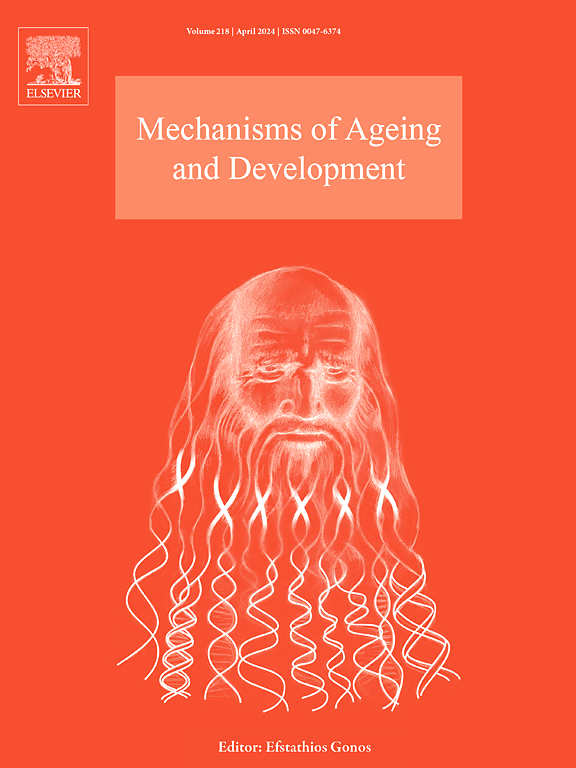Cyr61 promotes D-gal-induced aging C2C12 cell fibrosis by modulating Wnt/β-catenin signaling pathways
IF 5.1
3区 医学
Q2 CELL BIOLOGY
引用次数: 0
Abstract
Sarcopenia is characterized by age-related muscle mass/function loss and fibrosis. Satellite cell (SC) dysfunction during aging promotes fibrotic transdifferentiation and extracellular matrix (ECM) deposition. Cyr61, a pro-fibrotic matricellular protein, and Wnt/β-catenin signaling pathway are implicated in muscle regeneration-fibrosis balance, but their interaction in sarcopenia remains unclear. This study first compared the expression of Cyr61 and fibrosis markers (TGF-β1, collagen type I and III) in skeletal muscle of young and old mice. In vitro, D-gal-induced C2C12 aging models were used to assess Cyr61 and Wnt signaling pathway by proliferation/apoptosis assays, ECM analysis, and detecting the changes of myogenic/fibrotic markers (MyoD, α-SMA). Pathway modulation (FH535 inhibitor/LiCl activator) and combined with Cyr61 overexpression and knockout experiments defined mechanistic roles. Cyr61 was upregulated in skeletal muscle of aged mice, which was positively correlated with increased TGF-β1 and collagen deposition. In D-gal-induced C2C12 cells showed suppressed cell proliferation, increased apoptosis and enhanced ECM deposition, accompanied by elevated Cyr61. Cyr61 knockdown or Wnt signaling pathway inhibition (FH535) reversed fibrosis (α-SMA, collagen) and restored myogenesis (MyoD).This study reveals for the first time that Cyr61 drives sarcopenic fibrosis via Wnt/β-catenin activation, promoting myocyte-to-fibrotic transition. Targeting the Cyr61-Wnt axis may ameliorate age-related muscle degeneration, warranting translational validation in preclinical models.
Cyr61通过调节Wnt/β-catenin信号通路促进d -gal诱导的衰老C2C12细胞纤维化
肌肉减少症的特征是与年龄相关的肌肉质量/功能丧失和纤维化。衰老过程中卫星细胞(SC)功能障碍促进纤维化转分化和细胞外基质(ECM)沉积。Cyr61(一种促纤维化基质细胞蛋白)和Wnt/β-catenin信号通路与肌肉再生-纤维化平衡有关,但它们在肌肉减少症中的相互作用尚不清楚。本研究首先比较了Cyr61和纤维化标志物TGF-β1、I型胶原和III型胶原在青年和老年小鼠骨骼肌中的表达。在体外,采用d -gal诱导的C2C12衰老模型,通过增殖/凋亡实验、ECM分析和检测肌源性/纤维化标志物(MyoD, α-SMA)的变化来评估Cyr61和Wnt信号通路。通路调节(FH535抑制剂/LiCl激活剂)和Cyr61过表达和敲除实验确定了机制作用。Cyr61在老年小鼠骨骼肌中表达上调,与TGF-β1增加和胶原沉积呈正相关。在d -gal诱导的C2C12细胞中,细胞增殖受到抑制,凋亡增加,ECM沉积增强,Cyr61升高。Cyr61敲低或Wnt信号通路抑制(FH535)可逆转纤维化(α-SMA,胶原)并恢复肌生成(MyoD)。本研究首次揭示Cyr61通过Wnt/β-catenin激活驱动肌少性纤维化,促进肌细胞向纤维化转变。靶向Cyr61-Wnt轴可能会改善与年龄相关的肌肉变性,这需要在临床前模型中进行翻译验证。
本文章由计算机程序翻译,如有差异,请以英文原文为准。
求助全文
约1分钟内获得全文
求助全文
来源期刊
CiteScore
11.10
自引率
1.90%
发文量
79
审稿时长
32 days
期刊介绍:
Mechanisms of Ageing and Development is a multidisciplinary journal aimed at revealing the molecular, biochemical and biological mechanisms that underlie the processes of aging and development in various species as well as of age-associated diseases. Emphasis is placed on investigations that delineate the contribution of macromolecular damage and cytotoxicity, genetic programs, epigenetics and genetic instability, mitochondrial function, alterations of metabolism and innovative anti-aging approaches. For all of the mentioned studies it is necessary to address the underlying mechanisms.
Mechanisms of Ageing and Development publishes original research, review and mini-review articles. The journal also publishes Special Issues that focus on emerging research areas. Special issues may include all types of articles following peered review. Proposals should be sent directly to the Editor-in-Chief.

 求助内容:
求助内容: 应助结果提醒方式:
应助结果提醒方式:


